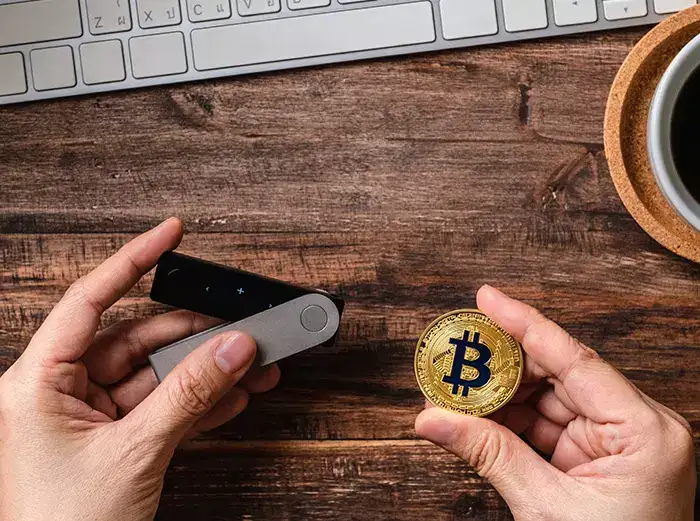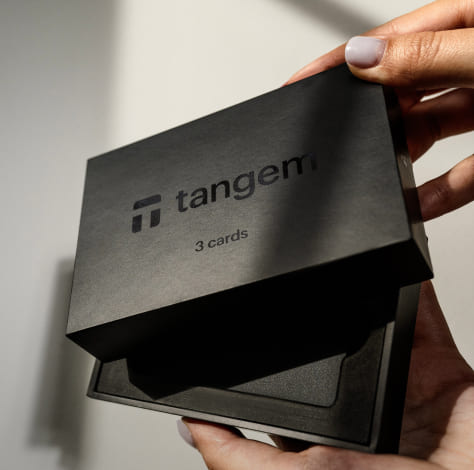Most users overlook the importance of verifying their hardware wallet to ensure it hasn’t been compromised during the supply chain process. In an era of increasing cyber threats, understanding how to protect your digital assets is necessary. This guide outlines straightforward steps to confirm the integrity of your device, helping you maintain security and peace of mind as you manage your cryptocurrency investments.
Understanding Hardware Wallets
A hardware wallet is a physical device designed to securely store cryptocurrency private keys offline, providing a level of protection against online threats. These wallets can take the form of USB devices or specialized hardware, ensuring that sensitive information remains isolated from potentially harmful software or networks.
What is a Hardware Wallet?
Little is known about how hardware wallets function, yet they play an important role in the management of digital assets. Unlike software wallets, which connect to the internet, hardware wallets store private keys in a secure environment, making unauthorized access difficult. Users interact with their balances and transaction management through an interface, while the wallet itself performs cryptographic functions without exposing keys to potentially insecure environments.
Importance of Security in Hardware Wallets
Assuming users are safeguarding their cryptocurrency holdings, hardware wallets offer a significant upgrade in security compared to traditional software wallets. They minimize the risk of exposure to malware and phishing attacks. However, it’s vital to ensure that the wallet is not tampered with during the supply chain process, as even a small compromise can lead to devastating financial losses.
Another important aspect of hardware wallet security is the implementation of strong user authentication methods. This includes features such as PIN protection and secure recovery phrases that enhance security further. Users must verify the device’s integrity before use, as a compromised wallet can facilitate unauthorized access to funds. Being diligent about security measures can foster a more secure cryptocurrency management experience.
How to Verify Your Hardware Wallet
If your hardware wallet is not verified, it may be at risk of compromise. To ensure that your wallet is safe and intact, you should follow a systematic verification process. This includes confirming that the device you are using is genuine and has not been tampered with in any way. It’s wise to buy directly from the manufacturer or a trusted retailer to minimize risks.
Tips for Initial Verification
There’s a series of simple steps to follow for initial verification of your hardware wallet. Start by inspecting the packaging for any signs of tampering or damage. Check the device for any physical alterations, and always verify the device’s firmware through the official software.
- Purchase only from trusted sources
- Inspect the packaging closely
- Verify the wallet’s firmware version
After confirming these aspects, proceed to initialize the device following the manufacturer’s instructions to ensure a secure setup.
Steps for Ongoing Security Checks
Checks on your hardware wallet should not end after the initial verification; they must be performed regularly to ensure ongoing protection. Always update your wallet’s firmware when prompted and maintain a secure backup of your recovery seed in a safe place. Regularly monitor for any unusual transactions or account activity as these could indicate potential security threats.
Ongoing vigilance is important in maintaining the integrity of your hardware wallet. Set reminders for periodic checks and educate yourself on the latest security practices relating to hardware wallets. This proactive approach can significantly reduce the risk of falling victim to scams or hacks, ensuring your assets remain protected.
Factors to Consider for Supply Chain Security
There’s a growing need for strict security protocols in the supply chain to ensure the integrity of hardware wallets. Factors to consider include:
- Manufacturing practices
- Distribution channels
- Shipping methods
- Vendor assessments
- Quality control measures
Recognizing these factors can significantly enhance your wallet’s security against potential threats.
Manufacturing Processes
Assuming a secure manufacturing process is in place is paramount to maintaining product integrity. Each component should undergo rigorous testing and quality assurance to prevent vulnerabilities. Manufacturers need to implement strict protocols, including traceability of materials and components used, to ensure that every item is properly assessed.
By focusing on secure manufacturing practices, companies can mitigate risks related to compromised components. This approach not only protects the end-user but also builds trust in the brand.
Distribution and Shipping Integrity
Assuming that your hardware wallet will arrive as intended is risky without proper measures for distribution and shipping integrity. Every link in the delivery chain offers opportunities for interference, whether through tampering or transit damage. Establishing secure channels and trusted shipping partners is crucial to minimize these threats.
With stringent shipping protocols in place, including sealed packaging and tracked shipments, users can be more confident that the hardware wallet remains intact during distribution. Implementing real-time tracking and verification systems can also help in identifying any irregularities in the shipping process.
Strengthening distribution and shipping integrity helps protect the hardware wallet from potential compromise, ensuring the product’s state is verified before it reaches the consumer. This vigilance enables users to have a heightened sense of security regarding their hardware wallets’ authenticity.
Best Practices for Ensuring Your Wallet’s Security
To maintain the integrity of your hardware wallet, adopt stringent practices that mitigate risks associated with supply chain attacks. Regular assessments of your security measures and adherence to best practices can significantly enhance the safety of your cryptocurrency investments. Always be aware of potential vulnerabilities and take proactive measures to guard against them, including environmental factors that may affect the security of your wallet.
To further enhance security, ensure that your wallet is stored in a safe location away from unauthorized access. Physical security is just as vital as the digital aspect. Engaging in practices like using a secure safe or safety deposit box can provide an additional layer of protection against theft or damage.
Regular Software Updates
One of the simplest yet most effective methods to keep your hardware wallet secure is to regularly update its software. Manufacturers frequently release updates that patch vulnerabilities and enhance security features. Failing to keep your wallet’s software up to date can leave it exposed to newly discovered threats, making it easier for attackers to compromise your wallet.
One should always download updates directly from the official manufacturer’s website or through the wallet’s software interface. Installing updates promptly ensures you benefit from the latest security protocols and performance improvements, reducing the risk of being targeted by malicious entities.
Secure Storage Solutions
Solutions for securely storing your hardware wallet are vital in protecting your assets from theft or damage. Use safe and tamper-proof environments, such as a locked drawer or a safe, to minimize exposure to risk. Additionally, avoid leaving your wallet unattended in open or public spaces.
Practices such as employing a multi-signature setup or utilizing a hardware wallet in conjunction with offline cold storage can greatly enhance the security of your assets. This layered approach ensures that even if one method is compromised, your funds remain protected. Always seek to utilize features like passphrases and backup recovery phrases to further safeguard against unauthorized access.
Common Security Threats and How to Avoid Them
After investing in a hardware wallet, understanding the security threats it may face is important for safeguarding your assets. Common threats like phishing attacks and physical tampering can compromise the integrity of your wallet if precautions are not taken. Employing best practices can enhance your security posture and help mitigate risks associated with these vulnerabilities.
Phishing Attacks
Them attackers often use deceptive tactics to trick users into revealing their recovery phrases or private keys. By sending fake emails or creating counterfeit websites that mimic legitimate services, they aim to harvest sensitive information. To protect against this threat, always verify the sender’s email address and look for secure connections before entering sensitive data.
Physical Tampering
Physical tampering is another significant threat that can undermine the security of your hardware wallet. Unauthorized access to your device can lead to exposure of your private keys or recovery phrases. Always ensure your wallet is stored in a secure location and inspect it regularly for any signs of intrusion.
Avoid leaving your hardware wallet unattended in public spaces where it can be easily accessed. Utilize tamper-evident seals or protective cases to deter unauthorized handling. Being vigilant and practicing secure storage habits can significantly enhance the safety of your hardware wallet against physical threats.
Additional Resources for Hardware Wallet Security
Many resources are available to enhance your understanding of hardware wallet security. These resources provide valuable insights into best practices for maintaining the integrity of your devices, ensuring you are well-equipped to protect your digital assets. From official manufacturer guidelines to third-party assessments, leveraging these sources can significantly bolster your security posture.
Recommended Tools and Software
Recommended tools and software can play an important role in securing your hardware wallet. Tools such as open-source verification software allow you to check the authenticity of your wallet firmware, ensuring no malicious code has been introduced. Additionally, using strong, unique passwords and enabling two-factor authentication on services linked to your hardware wallet adds a layer of security.
Online Communities and Support
Recommended online communities and support forums can provide real-time advice and solutions. Engaging with knowledgeable users on platforms such as Reddit and specialized cryptocurrency forums can help you stay updated on the latest security threats and mitigation strategies. These communities often share valuable experiences and troubleshooting methods that can alleviate concerns about hardware wallet vulnerabilities.
The engagement in these communities can foster collaboration and knowledge-sharing, yielding insights that can significantly improve your security practices. By actively participating, you can also access timely updates on emerging threats and get support from experienced members, which is especially helpful when faced with potential security issues related to your hardware wallet.
To wrap up
To wrap up, ensuring the integrity of your hardware wallet is necessary for maintaining the security of your digital assets. Verifying the authenticity of your device through trusted sources, checking for tamper-proof seals, and researching the manufacturer’s reputation are effective methods to decrease the likelihood of compromise. Regularly updating your firmware and using secure connections during initial setup can further bolster your defenses against potential threats.
Additionally, leveraging independent reviews and community feedback can provide insights into the reliability of specific hardware wallets. Conducting comprehensive checks when receiving your wallet, such as confirming serial numbers and firmware versions, enhances the assurance that your device is uncompromised. By implementing these best practices, you can better safeguard your investments in the ever-evolving landscape of cybersecurity.







